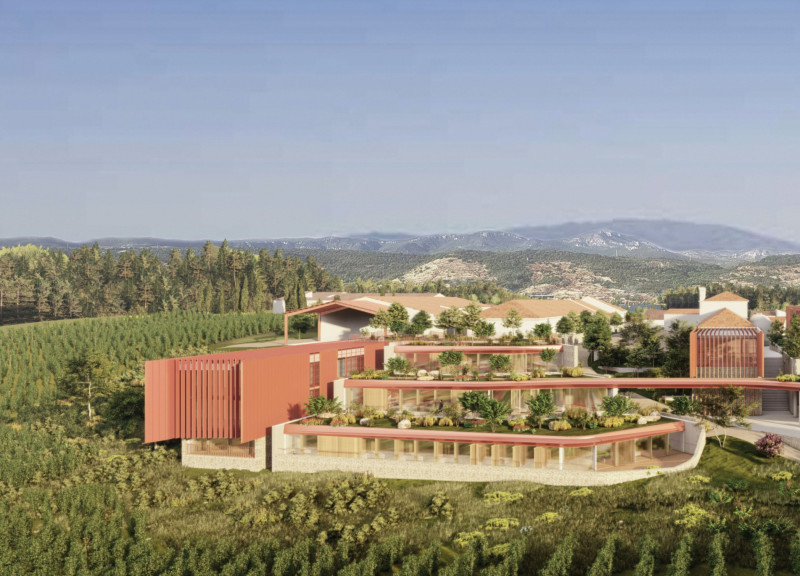5 key facts about this project
The Quinta Monte d'Oiro occupies a visually appealing landscape of hills and vineyards, creating a space that connects visitors with the natural environment. This location serves as a hotel and community space, focusing on blending the built environment with its surroundings. The design centers on an easy relationship with the geography, using the land's natural features to enhance the experience of those who visit.
Architectural Integration
The layout includes various buildings arranged around a central plaza, forming a cohesive space that encourages social interaction while allowing individual structures to maintain their character. This organization promotes a strong connection to the landscape, as large windows in the buildings frame views of the hills and vineyards, enabling a flow of natural light and providing a sense of continuity between inside and outside.
Terraced Landscapes
Terraces play a crucial role in the design, reflecting the curvature of the hills around them. These raised platforms are not just functional; they serve as inviting outlooks for guests to enjoy quiet moments in nature. The design incorporates green pathways that create private areas for hotel guests while still inviting exploration of the broader landscape.
Materiality and Detailing
Stone is a primary material used throughout the Quinta Monte d'Oiro, linking the structures to the earth beneath them. This choice adds stability and complements the visual context of the area. Steel is also used in elegant blades that enhance the structure while framing the views. The strategic incorporation of glass invites sunlight into the interior, creating bright spaces that blur the lines between indoors and the outdoor settings.
Landscape Design
The approach extends to the landscape design, where fruit trees line narrow pathways, enhancing the local agricultural heritage. This choice not only contributes to the visual environment but also strengthens the relationship with the vineyard, making the area feel connected to its surroundings.
The transition from one terrace to another creates a gentle journey through varying heights and encourages guests to experience the landscape more fully. As individuals move through these layered spaces, they are invited to appreciate the tranquility and beauty of the vineyard, reinforcing the connection between the architecture and the land itself.























































